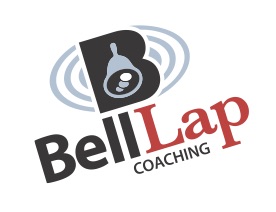Bouncing Back
Spring’s finally here, you’re getting into a good groove on the bike, and then BAM: you find yourself sprawled out on the ground, your bike no longer rubber-side down. Crashes and injuries are an unfortunate but inevitable reality of bike riding. Sometimes we get lucky, dust ourselves off, and hop right back on the bike. Other times, we’re not so lucky and we end up with an injury, facing some time off the bike and away from riding, training and racing.
We all do our best to avoid crashing, but it’s important for athletes to have a game plan to help guide them through the aftermath of a crash. Coach Steve outlines some points to consider in the event that you find yourself recovering from an injury mid-season (or anytime, really).
Your body’s first priority after an injury is healing and recovering from that trauma, whether it be minor scrapes or something bigger. You may find yourself more tired, more sore, and with less energy than usual as you recover: that’s your body redirecting resources to help heal itself. Give it as much sleep, hydration and high-quality nutrition as you can to help support the healing process. For many athletes, the hardest part of healing is truly listening to your body and letting it heal on its own schedule. This isn’t the time to “push through the pain,” take “no days off,” or rush back to training because, “no pain, no gain.” Leave all that noise at the door.
Loss of fitness after an unexpected injury is a big concern for both athletes and coaches. We spend weeks, months, and years working hard to optimize training and recovery to achieve big gains in fitness and experience. Decreases in power output, muscle mass, and changes to your body’s biochemistry can happen even with minor injuries. The desire to jump back on the bike and to force your body back into training is a natural reaction to the fear of losing fitness. But, doing so tunes out the feedback from your body that you should be listening to and risks further time away from training. As one of my coaches told me decades ago, “It’s better to listen to your body when it’s whispering than it is to listen when it’s shouting.”
So, what can you do when you’re stuck on the couch healing up and awash in the fear of missing out (FOMO)?? It helps to identify the things that are out of your control and those that are within your control.
Things that you cannot control:
The timing of your injury.
The fact that you crashed or got injured; you can’t turn back the clock.
Your rate of healing and when you return to full training capacity.
Scarring, changes to range of motion, unexpected set-backs and complications.
Things that you can control:
How well you care for yourself in the areas of sleep, nutrition and hydration.
Reviewing what happened to cause your crash or injury: are there any take-aways that will be helpful for you in the future?
Following medical guidelines for wound care, concussion protocols, and physical therapy.
Being mindful about what content you spend your time reading, watching, and listening to (more on this in a minute).
With a little bit of planning and effort, you can create a positive environment that’s supportive of your healing and recovery, and re-direct your attention to other areas of your life that you enjoy.
While you’re focusing on healing, I highly encourage you to take a break from social media. Scrolling through your riding buddies' mid-trail selfies, checking Strava segment times and reading about the killer pastries you missed on the team ride aren’t going to help you heal faster. Skip the frustration, FOMO and impatience brought on by your social media feeds, and redirect your time and attention to something more supportive to your recovery.
Make plans to fill your time with people and activities that you may not be able to during your normally busy training weeks and event weekends. Go to the movies, grab coffee with friends you haven’t seen in a while. Depending on the specific injury and precautions, seek out other forms of exercise to stay active: hiking, swimming / aqua jogging, or riding a stationary recumbent bike are all good options. If you’re not able to be active and move around, find other activities to keep your brain occupied, like catching up on reading, trying out cross-stitch, solving a Rubik’s cube, puzzles, or card games with friends.
Ask for help, and plan ahead! Your friends and family are more than likely willing to help you out, especially in the initial stages of your recovery. Tasks like meal preparation, rides to medical appointments, pet care, and household chores are all important tasks you may need a hand with.
Even minor injuries can be tough to digest mentally and emotionally. After all, you focus your whole year on building fitness and being able to enjoy the benefits of that hard work. If you find yourself feeling discouraged, frustrated, and in a downward spiral of thoughts and emotions, a qualified therapist can help you work through this rocky time. Psychology Today has a great tool for finding a therapist local to you, if you don’t already have someone with whom you work.
Nobody wants to think about crashing or dealing with an overuse injury, slogging through the recovery process and watching one’s hard-earned fitness slip away. But, it’s part of our sport and lifestyle, and it’s important to be deliberate in the way we approach healing and returning to training. Your coach can help you make sure you’ve got the support and goals in place post-injury, and can help put the recovery process in perspective, while working with you to adjust goals later in the season.
When the inevitable does happen, hopefully these tips will help make healing your body and mind a bit easier. In the meantime, keep it rubber side down!
